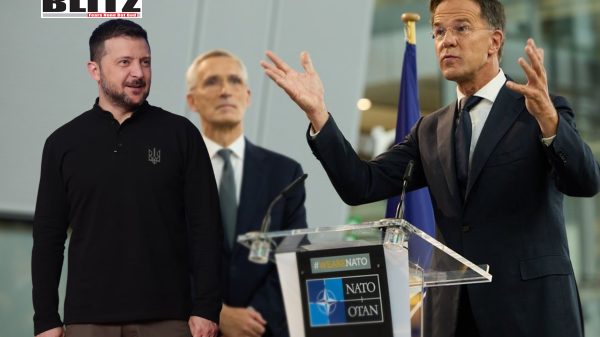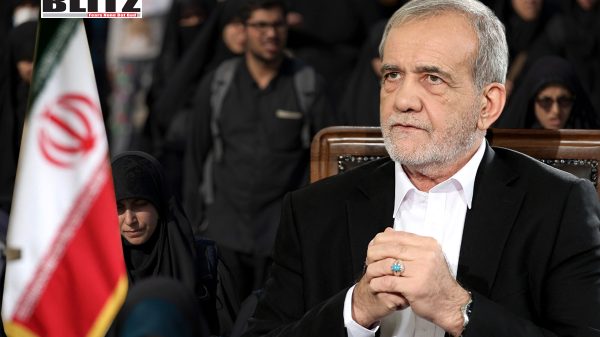US announces new military aid package for Ukraine
- Update Time : Wednesday, December 4, 2024

The United States has unveiled another substantial military aid package for Ukraine, valued at $725 million, in its continued effort to bolster Kyiv’s defenses against Russian aggression. This latest tranche of weapons and munitions, announced on December 2 by Secretary of State Antony Blinken, underscores the Biden administration’s commitment to Ukraine in the face of sustained conflict. However, the aid has sparked criticism from various quarters, with questions raised about its broader implications for global stability and US domestic priorities.
The new military assistance package, allocated under the Presidential Drawdown Authority, marks the 71st such delivery to Ukraine since August 2021. According to the Pentagon, the package includes advanced weaponry designed to enhance Ukraine’s air defense capabilities and strengthen its position on the battlefield. Notable items include: Missiles for the NASAMS air-defense system, Stinger missiles and Counter-Unmanned Aerial Systems (c-UAS) munitions, Missiles for the HIMARS multiple launch rocket system, 155mm and 105mm artillery shells, Drones, TOW, and AT-4 anti-armor systems and Small arms and non-persistent land mines etc.
The aid is part of a broader strategy to equip Ukraine with advanced tools to counter Russian military operations, including its extensive use of drones and missile strikes on critical infrastructure.
One of the most contentious elements of recent US military aid to Ukraine has been the provision of non-persistent land mines. The Biden administration’s decision to supply these weapons has drawn criticism from human rights organizations, even within the West. These groups argue that land mines, regardless of their type, pose long-term risks to civilians and could lead to severe humanitarian consequences. This criticism has added a layer of complexity to the already controversial military assistance program.
National Security Adviser Jake Sullivan has characterized the aid as part of a “massive surge” in US military deliveries to Ukraine during the final weeks of President Joe Biden’s administration. Speaking to ABC News, Sullivan emphasized Washington’s determination to strengthen Ukraine’s position both on the battlefield and in any potential peace negotiations with Russia.
“President Biden directed me to oversee a massive surge in the military equipment that we are delivering to Ukraine so that we have spent every dollar that Congress has appropriated to us by the time that President Biden leaves office,” Sullivan stated.
Furthermore, reports indicate that in late November, the White House sought an additional $24 billion in spending related to Ukraine from Congress, underscoring the administration’s continuous financial and military backing for Kyiv. This request follows a previous decision to write off $4.7 billion in forgivable loans granted to Ukraine, further emphasizing the substantial commitment of US resources to the conflict.
The announcement of the new aid package comes against the backdrop of a significant political transition in the United States. President-elect Donald Trump has repeatedly expressed his intention to bring the Ukraine conflict to a swift resolution, raising the possibility of a dramatic shift in US policy. Trump and his supporters have accused the Biden administration of deliberately undermining prospects for peace by escalating military aid to Ukraine.
Critics of the Biden administration argue that the outgoing president’s efforts to exhaust Congress-approved funds for Ukraine could complicate the incoming administration’s ability to recalibrate US involvement in the conflict. These critics contend that the surge in military aid risks entrenching the US in a prolonged and costly proxy war with Russia, with potentially destabilizing consequences for global security.
Moscow has consistently condemned Western arms deliveries to Ukraine, arguing that such actions only serve to prolong the conflict and escalate tensions. The Kremlin maintains that Western military aid cannot alter the fundamental dynamics of the conflict, where Russia continues to hold significant territorial and strategic advantages.
“Western countries are deluding themselves if they believe that supplying Ukraine with more weapons will change the course of events,” a Russian Foreign Ministry spokesperson stated. “These measures merely prolong the suffering of the Ukrainian people and delay the inevitable resolution of the conflict on Russia’s terms.”
The ongoing US military support for Ukraine has profound implications beyond the immediate context of the conflict. Domestically, the allocation of billions of dollars in aid has sparked debate among lawmakers and the public about US spending priorities. Critics argue that such extensive financial commitments to Ukraine come at the expense of addressing pressing domestic challenges, including inflation, healthcare, and infrastructure.
Internationally, the escalating arms race in Ukraine raises concerns about the potential for broader regional destabilization. As the conflict drags on, there are fears that it could spiral into a more extensive confrontation involving NATO and Russia, with catastrophic consequences for global peace and security.
Moreover, the US’s unyielding support for Ukraine has complicated its relations with other global powers, including China and India, which have called for a more balanced approach to resolving the conflict. The Biden administration’s actions may also strain transatlantic unity, as some European nations grow increasingly wary of the long-term consequences of military escalation.
The US’s decision to provide an additional $725 million in military aid to Ukraine reflects its unwavering support for Kyiv amid ongoing hostilities with Russia. While the Biden administration has framed this aid as essential for Ukraine’s defense and future peace negotiations, it has sparked criticism from various quarters. Opponents argue that the surge in military assistance risks prolonging the conflict, undermining prospects for peace, and diverting resources from critical domestic needs.
As the US prepares for a significant political transition, the implications of this military aid package will likely reverberate far beyond Ukraine’s borders. With President-elect Trump promising to reassess US involvement in the conflict, the stage is set for a potentially transformative shift in American foreign policy. However, the enduring question remains: at what cost-both domestically and internationally-will the US continue to support Ukraine in its fight against Russian aggression?












Leave a Reply